Story by Brandes Elitch
Lead photo by Steve Snyder. The Alfa 158D appeared at the Inaugural Sonoma Speed Festival.
I have never profiled our local track, just north of San Francisco, alternately known as Sears Point, Infinion Raceway, and now Sonoma Raceway. Today it is celebrating its fiftieth anniversary.
In the first 20 years, the course was charitably described as “rustic,” a good track with minimal infrastructure. During this time there were a series of ownership changes and infighting between the principals, and the track struggled to find its identity. Today, it hosts 340 days a year of racing-related events at the sprawling 1620 acre facility, with 300 daily employees, and 100 auto-centric businesses on site, including vintage car restoration shops, fabricators, racing teams, and driving coaches. It’s a good story, so let’s start with a bit of history.
Originally part of a 15,000 cattle and dairy farm, in 1967 Sonoma County approved a plan for a track located on the eastern border with Napa County overlooking the mudflats and levees bordering the San Francisco Bay. Construction was completed the following year. 1969 looked promising with a full schedule of activities including events sanctioned by the NHRA, SCCA, NASCAR, and AMA. As is often the case with such things, the financials were disappointing, and in 1970 the track was sold to Filmways Corp. With exception of a few races it was closed through 1971 and 1972. But in 1974 things improved, including the first Classic Sports Racing Group (CSRG) meeting for vintage racing. In 1979 the track was sold to a financial group which included Bob Bondurant and named Golden Gate International Raceway. As you likely know, Bondurant had one of the first racing driver schools (starting in 1973!) and his monthly lease for the track was $250! In 1981 it was sold to new owners, and for the balance of the 1980s the track was on firm footing. There were major infrastructure changes, new investors, and new events, including the NHRA Nationals and the NASCAR Cup Series, and the Sonoma Historic Auto Races, aka the Wine Country Classic.
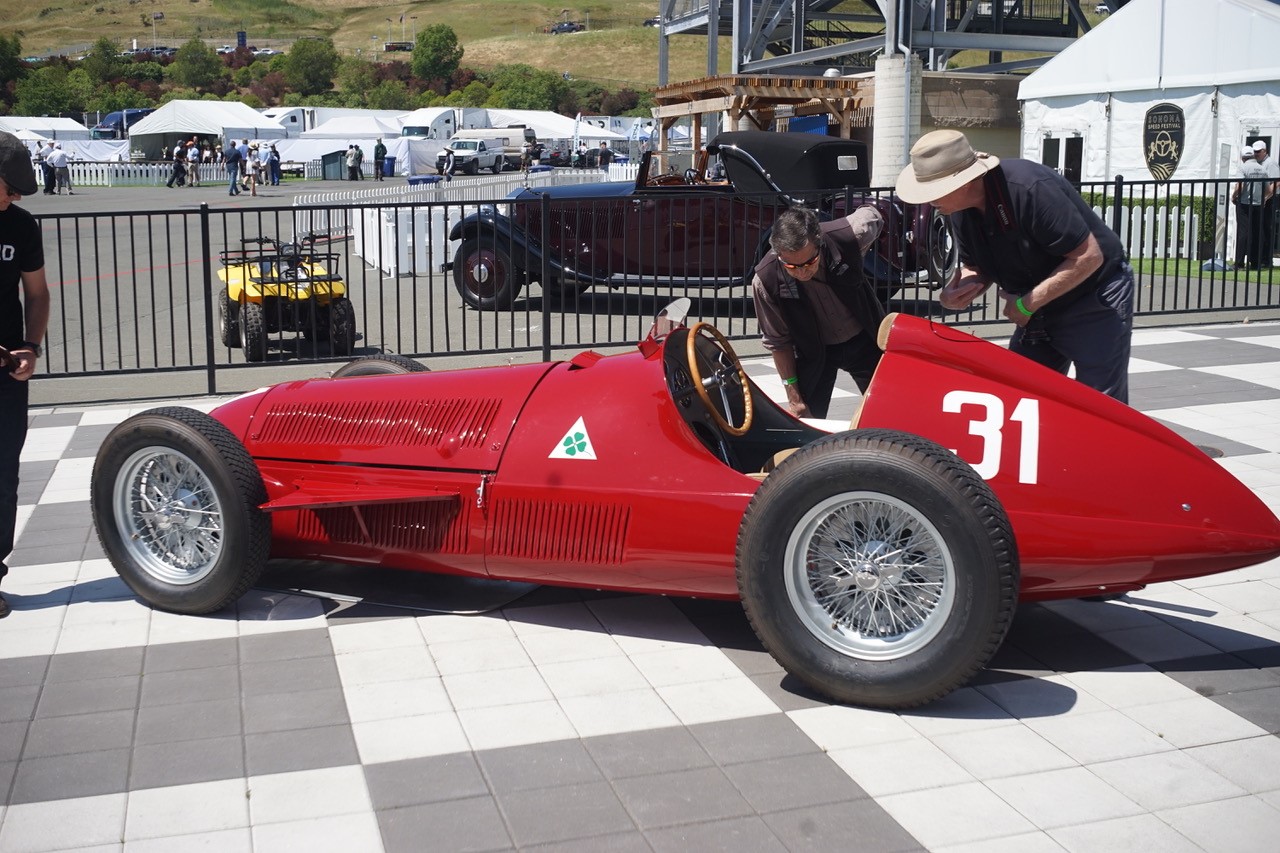
The Alfa 158 of the late Peter Giddings was reconstructed by Jim Stokes Workshops Limited to the specifications of the Alfa 158D. This Alfa 158 was reconstructed from a large and comprehensive cache of original parts and built over a four-year period, using a complete engine and transaxle unit with its oil tank.(From Giddings’ Website) Photo by Steve Snyder
In the 1990s, Bondurant moved to Arizona and Skip Barber opened a west coast headquarters for his racing school. By 1996, the NASCAR Cup Race attracted fully 102,000 spectators, which attracted a new owner: publicly traded Speedway Motorsports, Inc. The 1998-2000 renovation took four years and two environmental impact reports before it was approved. The work cost over $100 million! When the track opened, the use permit was a page and a half; today it’s 54 pages! In 2002, a German chipmaking company called Infinion became a 10 year sponsor, and when that expired the track was named Sonoma Raceway (about time!). Now, as the track celebrates its 50th anniversary, it hosts NASCAR, NHRA, IMSA, AMA, INDYCAR, American LeMans, World Touring Car, Vintage Racing, and Wednesday Night drag racing.
Track management has their eye on the future too. The raceway hosts more than 1000 students from 99 high schools and universities across North and South America at their “Make the Future California.” This features Shell Eco-marathon Americas, an event that challenges future engineers and scientists to go the farthest with the least amount of energy. A similar event is the sixth annual STEM Race Car Challenge, (the acronym of science, technology, engineering, and mathematics) a curriculum-based program in which 900 North Bay students build gravity powered race cars using recycled materials.
As you might imagine, the NASCAR weekend is the biggest moneymaker for the track. Speedway Motorsports owns eight other top-market raceways and has a TV broadcast agreement with NASCAR through 2024. Last year, the IndyCar Grand Prix moved to Laguna Seca racetrack, but according to management, the track lost a quarter million dollars a year with that event, so they are focusing on other things that emphasize the “Sonoma County Lifestyle Experience,” which brings us to the Sonoma Speed Festival.
In the list of advisors, the first name is Steve Earle. It is not an exaggeration to say that Steve Earle is the person who, more than anyone else, made vintage racing a reality in California, and by extension, elsewhere in the U.S. In 1974 he organized the first Monterey Historics at Laguna Seca raceway in Monterey, which he ran for 36 years. He also organized the Sonoma Historics and ran that for 28 years. He brought a couple of new ideas to the table: using SCCA corner workers and safety personnel, and opening up the events to everyone with an eligible car, wherever they came from. He was focused on safety, car period authenticity and preparation, and running cars in historic configuration. When I saw Steve’s name, I wanted to attend this event.
A great deal of work went into this event. Here is a list of the classes.
-Group 1 and 2 1949-54 Sports Production Cars
-Group 3 1959-65 Production/GT cars up to 5 litres
-Group 4 Masters Historic Formula One USA
-Group 5 1964-73 FIA Manufacturers Championship
-Group 6 1966-72 Historic Trans-Am
-Group 7 1965-69 Under 2.5 litre production cars
-Group 8 1932-52 Prewar Grand Prix cars
-Group 9 1981-90 prototypes, FIA group C and IMSA GTP
-Group 10 1971-80 IMSA Camel GT
About 300 cars in total were in the paddock, which included three Ferrari 250 GTOs, four ex-John Wyer Gulf Racing cars, including two Ford GT40s, the Lotus type 77 driven by Mario Andretti, and a rare (one of ten) McLaren F1 GTR Longtail. The cars were arranged side by side in long white tents and buildings, by category. Everything in the paddock was neat and clean, and there was even a food and wine area complete with Astroturf and white picket fences. The Henry Ford Museum showed a 1965 Lotus-Ford 38/1 along with a special video display showing the history of the car. The Revs Institute showed a 1966 Ford GT40 MK1 and a 1964 Alfa Romeo GTZ. The Mullin Museum showcased an extraordinary variety of cars, including Talbot-Lago, Delage, Delahaye,and Bugatti. Impeccable Ltd. showed the original Penske Camaro that won here 50 years ago and won seven team victories in 1969 on the way to the championship.
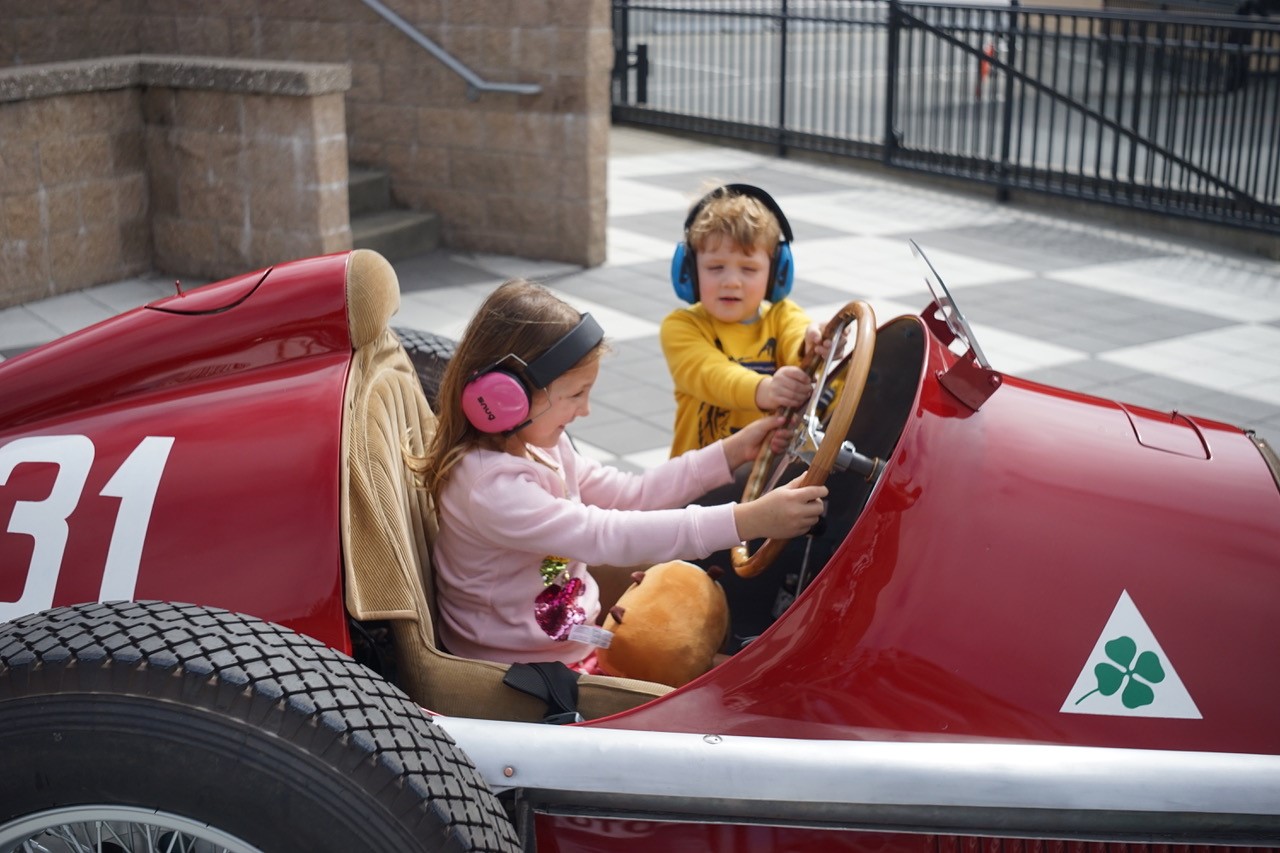
Peter Giddings would have enjoyed this photo of a new generation experiencing his Alfa 158. Photo by Steve Snyder
One of the most interesting cars in the paddock was a 1957 Alfa Romeo Giulietta named Sophia, which has been competing on the track for over 45 years of uninterrupted racing! There were a variety of Maseratis, including a Type 60 and two Type 61 Birdcage models. Nearby was an Alfa TZ 1 and TZ2 and a GTZ, as well as a 1934 type BP3 similar to the one which Nuvolari ran in the 1935 German G.P. On display was a SIATA 208CS and right next to it, which stopped me in my tracks, the 1957 Maserati 450S Costin Zagato coupe, which was apparently restored by Holman and Moody.
Attending the Historics is obviously about history, and one of the historical details which I realized there was from a poster in the Trans-Am section of the paddock, showing the drivers in this series from 1966-1972. I was in college and the Army for this period so I never got to see a race, but the list was extraordinary, including names like Titus, Jones, Follmer, Revson, Savage, Elford, Gurney, Donohue, Tullius, Posey, Hall, and Foyt! What a fabulous line-up. The poster hit me right between the eyes and made me realize what a truly special event the Trans-Am series was.
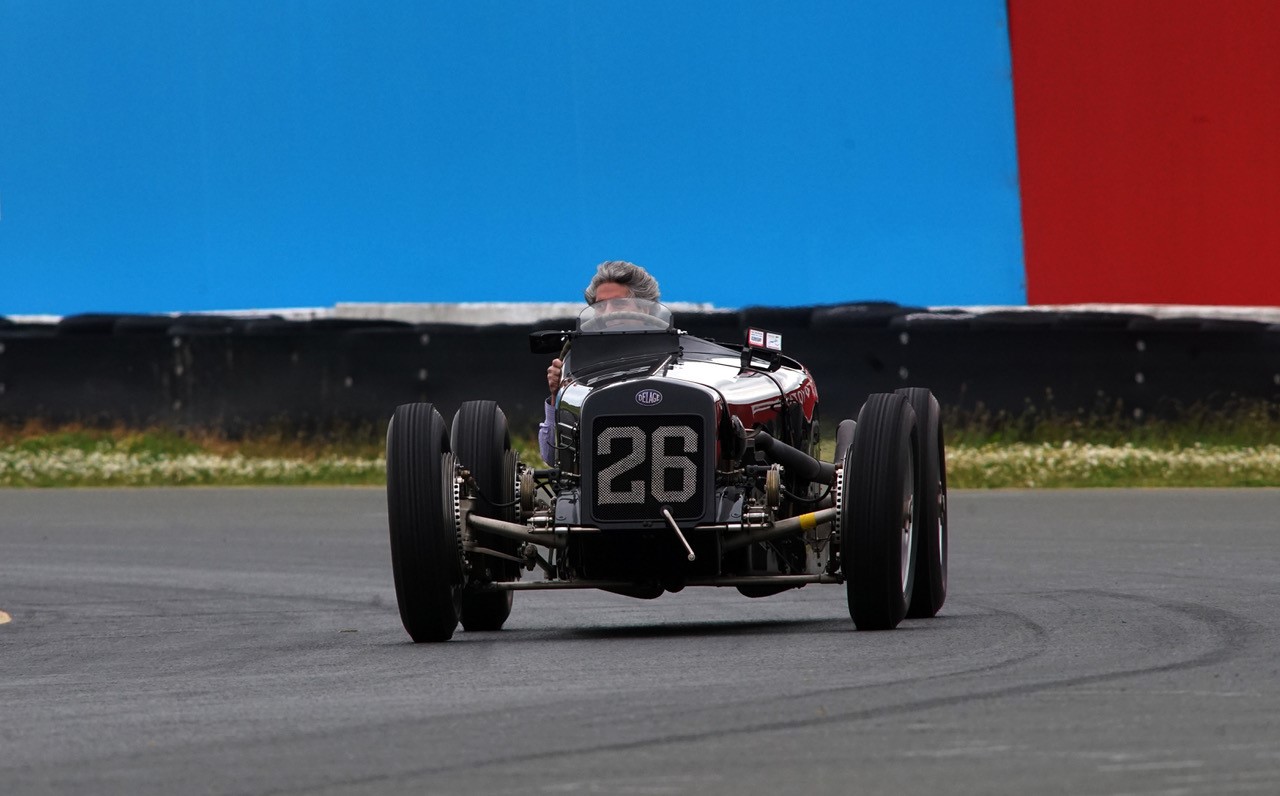
Jeff O’Neill enjoys the ex-Seaman, ex-Giddings Grand Prix Delage. O’Neill is also noted for piloting his own Maserati 250F. Steve Snyder photo
Thanks to the organizers, including Founder Jeff O’Neill. Finally, we should mention that the track’s speedway Children’s Charities has distributed more than $6.4 million to Sonoma County youth groups since 2001. I suspect that this event will grow and become even more popular next year.
Take a lap around the track:
https://www.sonomaraceway.com/handler.cfm/template,video/cat_id,56734/?med_id=1880574
General Website:
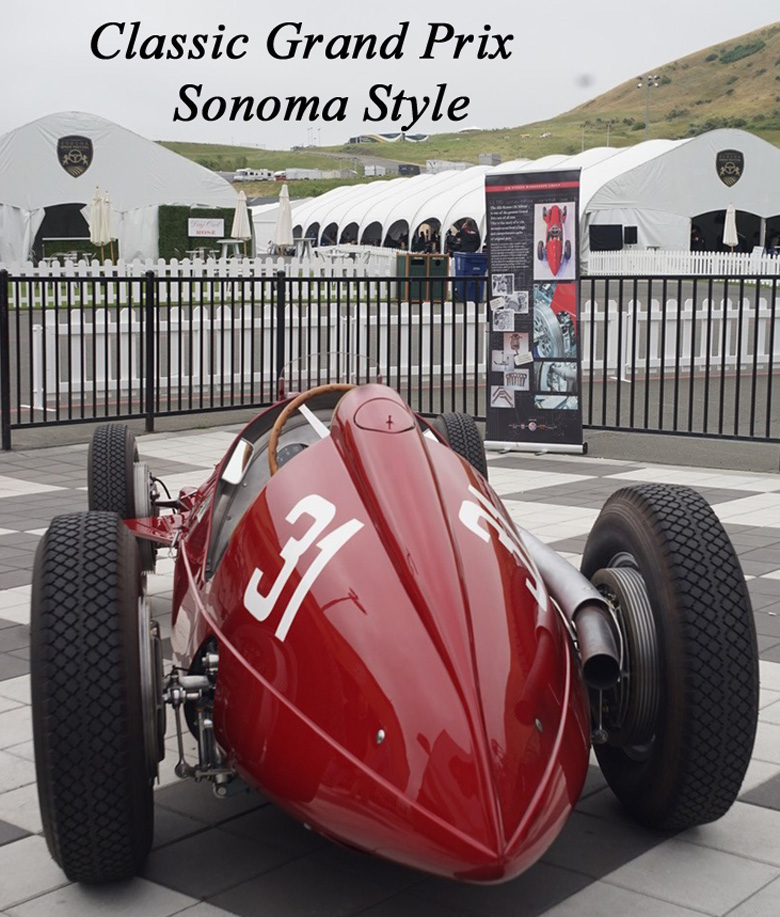
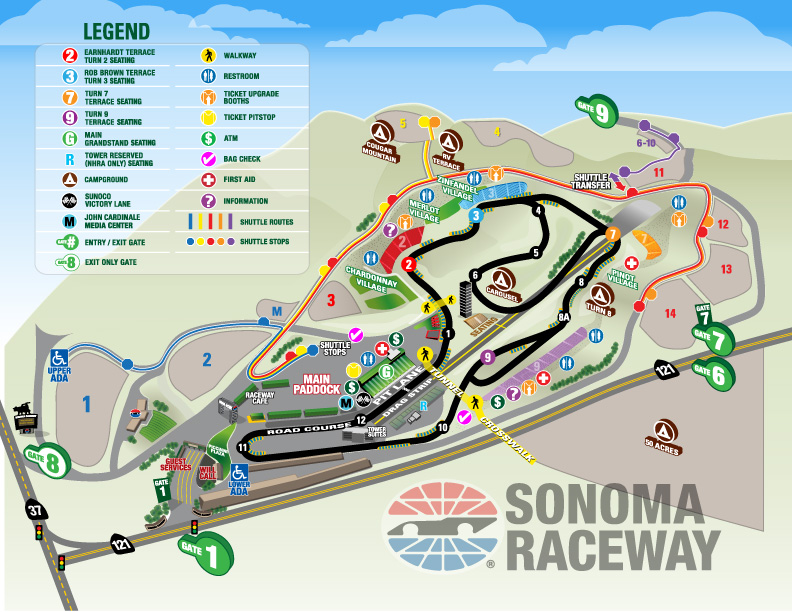
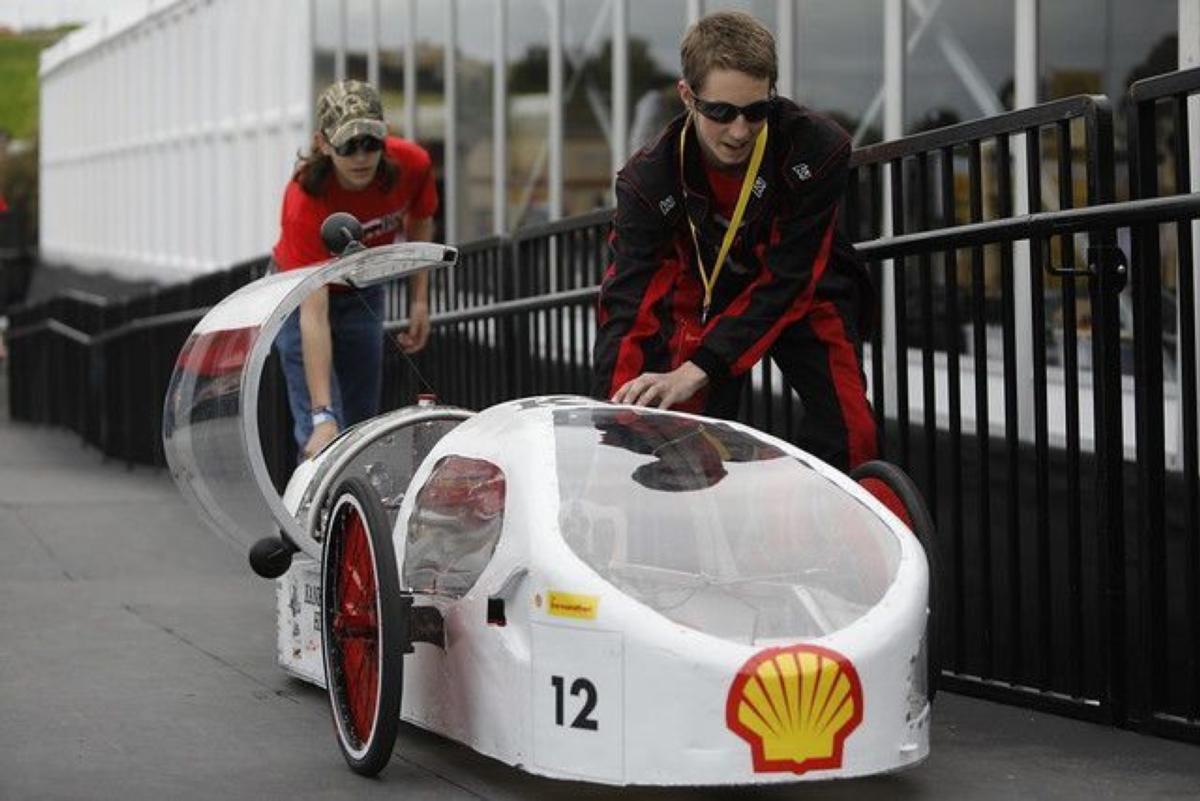
Great stuff, Brandes. I had no idea our local track had such an illustrious history.
Mark Donohue, you should know how to spell his name. You must be thinking of Dr. Phil. Regards, Jack Middleton
Great track . I am sorry we missed this new event. It was kind of pricey at $90 a ticket!